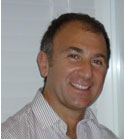National and international regulations that address radio-frequency exposure safety refer, for the most part, to the exposure guidelines established by the International Commission on Non-Ionizing Radiation Protection (ICNIRP), which are substantially harmonized with the C95.1-2005 standard promulgated by the IEEE. A few relevant exceptions are regulations from the United States, Canada, South Korea, India, and Bolivia, which mostly rely on 1986 guidance by the U.S. National Council on Radiation Protection and Measurements (NCRP). A common trait of these guidelines is the definition of the specific absorption rate (SAR) (i.e., the time-rate of radio-frequency power dissipation in tissue) as the primary metric for quantifying exposure from portable wireless communication devices operated close to the body. Additional common traits are the definition of separate sets of limits for workers and for the general public (e.g., consumers) as well as the definition of time-averaging provisions in the application of exposure limits.
Under the current regulatory frameworks worldwide, before their market introduction, wireless devices such as smartphones and tablets, laptop computers, and portable radios are subject to routine compliance evaluations, which for the most part rely on SAR measurements performed according to international standards defining accurate and efficient testing methods. In particular, IEEE 1528, IEC 62209-1, and IEC 62209-2 form the backbone of internationally accepted SAR testing guidelines. These standards are continually updated to reflect the rapid progress of technology—for instance, the transition from single to multiple transmitter devices, from narrow-band to broadband waveforms, and from handheld to wearable devices. For SAR test data to be considered of acceptable quality, regulators frequently require test labs to be accredited according to the ISO/IEC 17025 standard, which specifies general requirements for demonstrating competence to carry out tests and/or calibrations, thereby ensuring personnel competency and operations reliability.
 Dr. Antonio Faraone received the Ph.D. in applied electromagnetics from the University of Rome “La Sapienza” in Italy. In 1997 he joined Motorola, Inc., and currently serves as the Chief EME (Electromagnetic Energy) Scientist at Motorola Solutions, Inc., with documented expertise in RF dosimetry, antenna R&D, theoretical electromagnetics, and EME standards and regulations. He is a Motorola Dan Noble Fellow and Master Innovator with 29 U.S. patents, and has co-authored 35 peer-reviewed articles. Dr. Faraone is a recipient of the IEC 1906 Award and was recently elected to the AdCom of the IEEE International Committee on Electromagnetic Safety (ICES).
Dr. Antonio Faraone received the Ph.D. in applied electromagnetics from the University of Rome “La Sapienza” in Italy. In 1997 he joined Motorola, Inc., and currently serves as the Chief EME (Electromagnetic Energy) Scientist at Motorola Solutions, Inc., with documented expertise in RF dosimetry, antenna R&D, theoretical electromagnetics, and EME standards and regulations. He is a Motorola Dan Noble Fellow and Master Innovator with 29 U.S. patents, and has co-authored 35 peer-reviewed articles. Dr. Faraone is a recipient of the IEC 1906 Award and was recently elected to the AdCom of the IEEE International Committee on Electromagnetic Safety (ICES).
